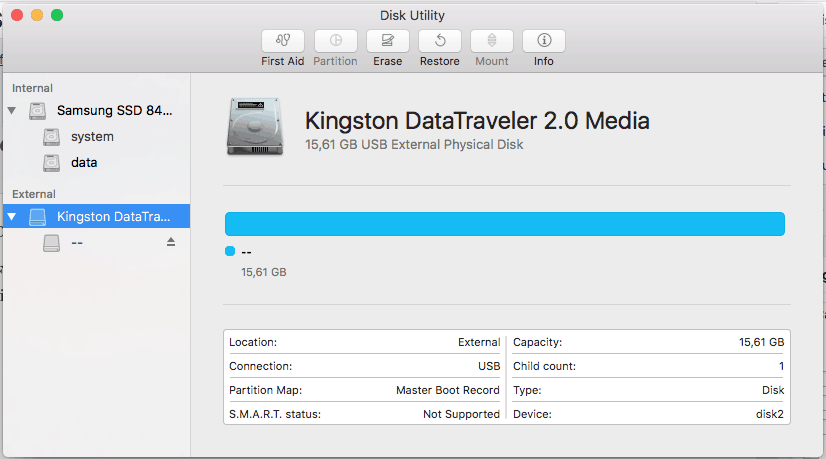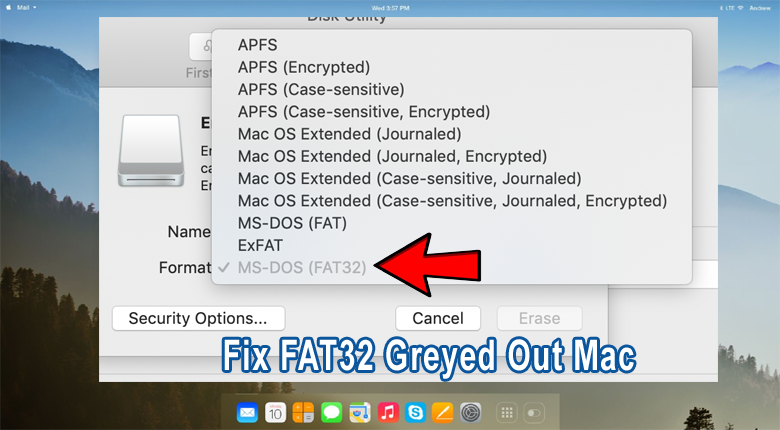

- MAC OS DISK UTILITY FORMAT MS DOS FOR MAC
- MAC OS DISK UTILITY FORMAT MS DOS MAC OS X
- MAC OS DISK UTILITY FORMAT MS DOS SERIAL
- MAC OS DISK UTILITY FORMAT MS DOS FREE
Microsoft has also developed their file system for Windows, NTFS. It was developed by Apple and first introduced in 1998 as an improved version of HFS, supporting much larger files and using the Unicode encoding. The main file system of macOS is HFS Plus. MacOS and Windows support different file systems. Once the formatting process is finished, you should be able to transfer files to the newly formatted flash drive. Depending on the size and speed of your flash drive, it may take a minute or two.


If you’re not sure which option you should choose, continue reading this article to find out more information about the main file systems used by macOS and Windows. Before you can click on the Erase button located in the Erase tab, you must select which file system you would like to use and give it a name.

MAC OS DISK UTILITY FORMAT MS DOS SERIAL
At the bottom of the main window are storage device details, including disk description, connection type, USB serial number, total capacity, write status, S.M.A.R.T. The application will appear on the screen, and you will see the main window, with a list of available storage devices on the left and various disk management options on the right.
MAC OS DISK UTILITY FORMAT MS DOS MAC OS X
In this article, we are taking a closer look at the Disk Utility, which comes with all recent versions of the Mac OS X operating system and how you can use it to format USB drive on Mac. Some flash drives have to be formatted first before you can store files on them. Each volume within an APFS container can have its own APFS format-APFS, APFS (Encrypted), APFS (Case-sensitive), or APFS (Case-sensitive, Encrypted).Not every flash drive out there can be used with a Mac computer right out of the box. You can easily add or delete volumes in APFS containers. For example, folders named “Homework” and “HOMEWORK” are two different folders. For example, folders named “Homework” and “HOMEWORK” are two different folders.ĪPFS (Case-sensitive, Encrypted): Uses the APFS format, is case-sensitive to file and folder names, and encrypts the volume. Choose this option if you don’t need an encrypted or case-sensitive format.ĪPFS (Encrypted): Uses the APFS format and encrypts the volume.ĪPFS (Case-sensitive): Uses the APFS format and is case-sensitive to file and folder names.
MAC OS DISK UTILITY FORMAT MS DOS FOR MAC
Each volume uses only part of the overall container, so the available space is the total size of the container, minus the size of all the volumes in the container.Ĭhoose one of the following APFS formats for Mac computers using macOS 10.13 or later.ĪPFS: Uses the APFS format. If desired, you can specify reserve and quota sizes for each volume.
MAC OS DISK UTILITY FORMAT MS DOS FREE
When a single APFS container has multiple volumes, the container’s free space is shared and is automatically allocated to any of the individual volumes as needed. macOS 10.13 or later supports APFS for both bootable and data volumes.ĪPFS allocates disk space within a container (partition) on demand. While APFS is optimized for the Flash/SSD storage used in recent Mac computers, it can also be used with older systems with traditional hard disk drives (HDD) and external, direct-attached storage. Apple File System (APFS), the default file system for Mac computers using macOS 10.13 or later, features strong encryption, space sharing, snapshots, fast directory sizing, and improved file system fundamentals.


 0 kommentar(er)
0 kommentar(er)
